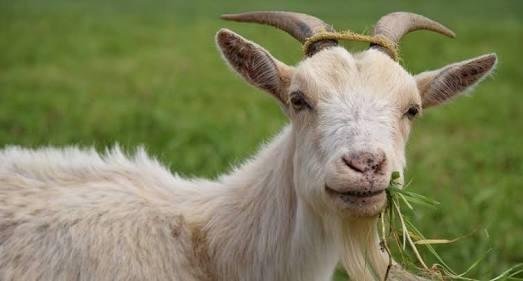Goat livestock

Goat livestock (Capra aegagrus hircus) is one of the goat subspecies that are kept or domesticated from wild goats of Southwest Asia and Eastern Europe. Goats are members of the Bovidae family and are siblings with sheep because they belong to the Caprinae sub family. There are over 300 different types of goats. Goats are among the longest-growing species, for milk, meat, feathers, and skin all over the world. In 2011, the population of goats living worldwide reached 924 million according to the United Nations Food and Agriculture Organization.
An adult male goat.
Goats are a medium-sized ruminant animal. Goat livestock (Capra aegagrus hircus) is a wild goat subspecies naturally scattered in Southwest Asia (the "fertile crescent" and Turkey) and Europe. Both male and female goats have a pair of horns, but the horns of the male goats are larger. Generally, goats have beard, convex forehead, tail slightly upward, and mostly straight and coarse hair. The body length of wild goats, excluding the tail, is 1.3 meters - 1.4 meters, while the tail is 12 centimeters - 15 centimeters. The female weighs 50 kilograms - 55 kilograms, while the male can reach 120 kilograms. Wild goats are spread from Spain eastward to India, and from India to the north to Mongolia and Siberia. The habitat he liked was a rocky mountainous area.
Goats have been cultivated by humans about 8000 to 9000 years ago. In the original nature, goats live in groups of 5 to 20 tails. In their quest for food, this goat group is led by the oldest female goat, while male goats play a role in keeping the herd safe. Active time looking for food day and night. The main foods are grasses and foliage.